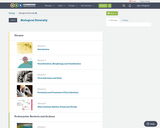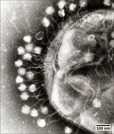
This resource is a video abstract of a research paper created by Research Square on behalf of its authors. It provides a synopsis that's easy to understand, and can be used to introduce the topics it covers to students, researchers, and the general public. The video's transcript is also provided in full, with a portion provided below for preview:
"Crohn’s disease is an incredibly painful inflammatory bowel disease that frequently reoccurs after treatment. The growth of a certain type of abdominal fat has been associated with Crohn's disease recurrence. This fat, called mesenteric adipose tissue, is tucked up against the membrane connecting the intestines to the abdominal wall. Microbes can escape the intestines in Crohn's disease and may affect the mesenteric fat. Recently, researchers explored this relationship by investigating the mesenteric microbiome of patients with Crohn’s disease. Crohn’s disease patients had distinct mesenteric microbiomes, host gene expression patterns, and metabolites compared to controls. To explore the specifics, the researchers isolated bacterial strains from the mesenteric microbiome of these patients. In a mouse model of colitis, introducing a mixture of five of the isolated bacterial strains made disease symptoms worse. One of these strains, _A..."
The rest of the transcript, along with a link to the research itself, is available on the resource itself.
- Subject:
- Biology
- Life Science
- Material Type:
- Diagram/Illustration
- Reading
- Provider:
- Research Square
- Provider Set:
- Video Bytes
- Date Added:
- 03/01/2022



